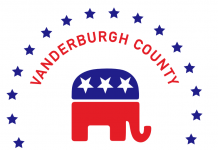By Olivia Covington
TheStatehouseFile.com
INDIANAPOLIS – Lawmakers concerned about fraud in the federal free- and reduced-lunch program have changed the way the state will measure poverty in the formula used to distribute state funding to schools.
 For years, the state has used the lunch program enrollment numbers as the basis for sending extra money to districts. This year, roughly 17.6 percent of the $6.5 billion in state school funding will be distributed based on that data.
For years, the state has used the lunch program enrollment numbers as the basis for sending extra money to districts. This year, roughly 17.6 percent of the $6.5 billion in state school funding will be distributed based on that data.
But concern that the federal government makes it too hard to verify eligibility for the program has led state budget writers to make a change. Starting in 2015, the formula will essentially measure poverty based on the number of students who qualify for free textbooks, a state-run program that will require more verification of parental income.
“It’s the same as the lunch program,†said Rep. Ed Clere, R-New Albany, who is the vice chairman of the Health Finance Commission, which recently learned more details about problems with the school lunch program.
“In terms of income parameters, it’s identical because the free and reduced lunch program is available to families whose household income is at or below 185 percent of the federal poverty level,†he said.
For a family of four, that level is $43,568.
Earlier this month, an official from the state Department of Education told the finance commission that audits by schools have found that one-third of students signed up for free- or reduced-priced lunches do not actually qualify for the federal program or their families failed to verify their eligibility.
Lawmakers have said part of the problem is that federal law prohibits school districts from asking families who want to enroll their children in the program to provide proof of their income.
Additionally, federal law mandates that schools can only audit up to 3 percent of families who have children in the program. Clere said families have to earn annual incomes close to the maximum threshold to be audited.
In some cases, Clere said, schools can audit fewer than the 3 percent.
Currently, about 49 percent of Indiana public school students participate in the free- and reduced-price lunch program, according to the Department of Education’s website.  That percentage has been climbing. In 2006, that percentage was just 36 percent.
Julie Sutton, the department’s director of school and community nutrition, told the Indiana Health Financial Commission that the number has been increasing in part since lawmakers started giving funding preference to schools with higher numbers of free- and reduced-lunch students.
Senate Appropriations Chairman Luke Kenley, R-Noblesville, said that raised questions about using the program as an appropriate measure for poverty, especially because it is so tough for schools to verify family incomes. That’s what led to using the free textbook program.
“We needed something that was a fair comparison to the lunch program, but something that we control that has more reporting requirements,†said Kenley, who is the chief budget writer in the Senate. “We knew we needed something of enough value (that) parents would be willing to cooperate in reporting their income and so all the onus wasn’t on the school.â€
Clere said the change to the textbook program shouldn’t impact schools with students who are genuinely needy.
“Students who were counted under the lunch program method for computing the complexity index should still be counted under the textbook assistance program because the income maximums for both programs are identical,†Clere said. “So there should be no negative effect on school corporations as long as families were, in fact, eligible to participate in the lunch program.â€
Lawmakers also voted to require families to provide more information when they are applying for free textbooks, a move designed to make it easier for schools to verify that they qualify for the program.
Audits show that in the school lunch program, 11 percent of applicants either were never eligible or increased income made them ineligible to participate in the program. Another 22 percent of families failed to respond to requests to verify income information.
“There’s very little verification of who is eligible (for free and reduced lunches), and in recent years the number of kids on free and reduced lunch have been going up dramatically,†Kenley said.
Clere said he supported changing the poverty factor because he believes Hoosier taxpayer money should be used fairly.
“At minimum we’re talking about hundreds and hundreds of millions of dollars at stake,†Clere said. “We owe it to Hoosier taxpayers…to use the most accurate system possible, and many of us believe that transitioning to the textbook method would be a much more reliable system.â€
Dennis Costerison, executive director of the Indiana Association of School Business Officials, said he thinks it’s important Hoosiers know that parents, not school corporations, are the ones committing fraud. But he said it’s understandable that lawmakers would want to ensure the state is using accurate data to distribute money.
Kenley said he is unsure of how schools will handle families who currently take advantage of the school lunch program but are found to be ineligible through the textbook assistance program. And although the free- and reduced-price lunch program is run by the federal government, some lawmakers are calling for action against families that purposely misrepresent their income.
“I was very disappointed to hear that they don’t turn it over to the local prosecutor. They just take them off the program, and I think that’s unfortunate,†said Rep. Eric Turner, R-Cicero. “This is definitely something to look at next session.â€
Reporter Ellie Price contributed to this story. Olivia Covington is a reporter for TheStatehouseFile.com, a news website powered by Franklin College journalism students.




Why is it the Republicans can only sense fraud if it looks at the needy in our state? Do they realize we still have elections?
Comments are closed.